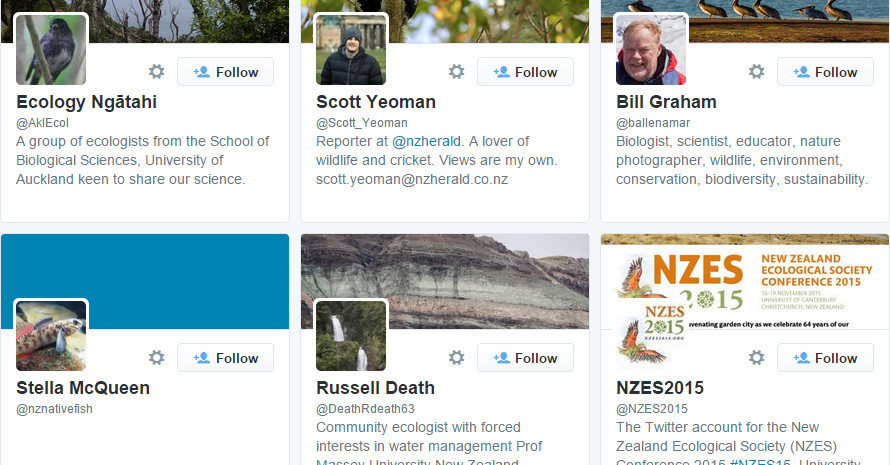Who
Wildlife Foxton Trust
What
I used Twitter and Facebook to start sharing the trust’s story as it first started up.
What we learnt from that about the differences between the two platforms for the trust.
How
Both the Twitter and Facebook accounts carried pretty much the same messaging and saw similar growth rates, but — surprisingly, to us — that growth came from very different groups of people.
The Facebook account was liked, almost exclusively, by Horowhenua locals — people whose connection is simply that they live in the district the centre is proposed for.
The Twitter account was followed nearly exclusively by people with very strong conservation interests (many of them conservation professionals or organisations) from around New Zealand and some from overseas.
Here’s a representative sample of the Twitter followers:

The split in audiences between Facebook and Twitter was not expected; but having that knowledge makes it useful for the Trust to start thinking about differentiating the messages they post on each platform to help maximise the response from each.
Who’s on Twitter?
The number of Kiwis on Twitter is significantly lower than on Facebook, YouTube and even LinkedIn.
Twitter itself says that in New Zealand most Twitter users focus on consumer and retail information.
From my broader experience, Twitter in New Zealand looks to works well for citizen journalism, political messaging and activism, water cooler conversations, big brand consumer promotions and for bringing together members of specialist interest groups.
The audiences on Facebook are perhaps more generally social — more friends, family and community focused, even when based around business activities.
Horowhenua Twitter and Facebook research
A local paper, the Horowhenua Mail, has an active Facebook page. It also has a Twitter account where its reporters simply put teasers and links to their online articles. After more than four years at it, they have a very low number of Twitter followers and pretty much zero engagement.
The Mail’s Twitter strategy is ill-conceived. But regardless, the heavy local engagement on its Facebook pages and lack of it on its Twitter account does echo our experience.
I set up Twitter alerts for a number of prominent and topical Horowhenua words to monitor their frequency, and in the non-stop tweet torrent that is daily Twitter, they appeared maybe 2 or 3 times a day on a good day — a very low rate.
In this small provincial district, Twitter just doesn’t seem to have a significant local presence, but national and international conservation people did use it to connect easily with the small town conservation tourism group.
